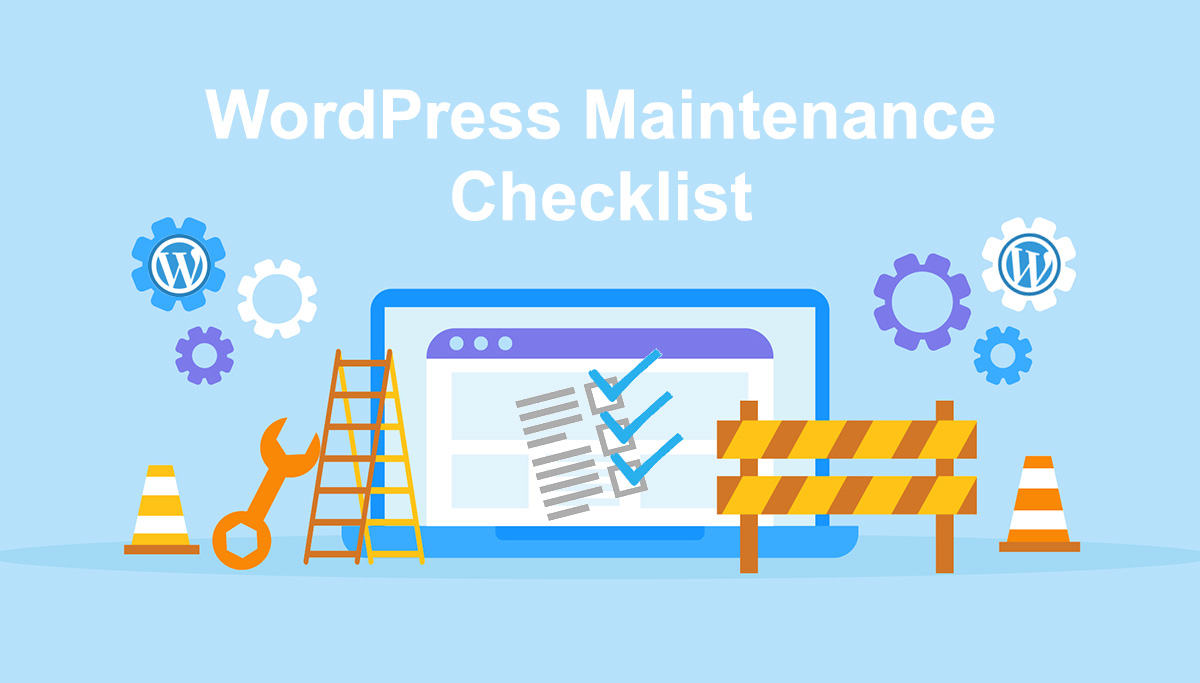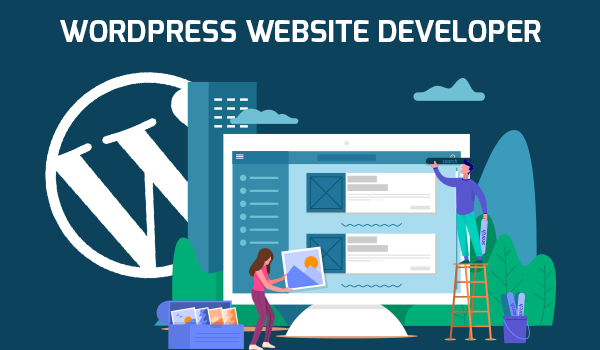WordPress Maintenance Checklist: Creating a WordPress website marks the beginning of your online business.
The success and smooth operation of your website depend largely on consistent maintenance.
Skipping these important tasks can lead to security breaches, reduced user experience, and lower search engine rankings.
In this blog post, we aim to provide you with a comprehensive WordPress maintenance checklist that serves as a guide to keeping your website in tip-top shape.
Back up regularly Back up regularly is your safety net.
They ensure that your data and website content are safe in case something unexpected happens. Use a reliable backup plugin to automate this process. Schedule daily or weekly backups and store them securely, in the cloud or offline.
WordPress Core
Update Keeping your WordPress core up to date is important. It is fundamental to the security and performance of your website. Enable automatic updates for minor versions and check regularly for major updates. Make sure your website is running the latest version.
Theme and Plugin Updates
Themes and plugins play an important role in the functionality of your website. Developers release updates to fix bugs, add features, and improve security. Update all themes and plugins regularly or consider deleting those you no longer use to reduce potential vulnerabilities.
Security controls
Security must be a top priority. Regularly scan your website for malware, vulnerabilities, and suspicious activity. Use a security plugin to add an extra layer of protection and monitor login attempts. Implement strong passwords for all user accounts.
Database Optimization
An overloaded database can slow down your website. Optimize your WordPress database regularly by cleaning up unnecessary data. Use plugins like WP-Optimize to make this process easier.
Broken Links
Broken links can harm user experience and SEO. Check your site for broken links regularly and fix them quickly. There are plugins available to automate this task.
Optimize performance and speed
A slow website can deter visitors. Regularly optimize your website to increase speed. Compress images, leverage browser caching, and use a content delivery network (CDN) to improve load times.
Review and update content
Quality content will engage your audience. Review your content regularly to make sure it’s up-to-date, relevant, and error-free. Outdated information can harm your website’s reliability.
Manage comments
Manage your comments effectively. Spam comments can harm your site’s reputation and SEO. Use an anti-spam plugin and check comments regularly.
SEO Check Regular
SEO check helps improve your website visibility. Analyze your site’s performance with tools like Google Analytics and Search Console. Identify and fix issues like duplicate content, broken links, and missing meta tags.
User Experience Testing
A positive user experience is essential to retaining visitors. Regularly test your website’s usability and navigation. Ensure that it works well on various devices and browsers.
Mobile Responsiveness
The majority of users access websites on mobile devices. Ensure your site is responsive and mobile-friendly. Google prioritizes mobile-friendly websites in its search results.
Check Contact Forms
Contact forms are essential for user engagement. Regularly test all contact forms to ensure they are functioning correctly. Make sure you receive notifications and messages without issues.
SSL Certificate
Security and trust are key factors. Ensure that your site is secured with an SSL certificate. Google considers SSL a ranking factor, and visitors trust secure websites more.
Monitor Downtime
Monitor your site’s uptime. Frequent downtime can frustrate users and hurt your SEO. Use uptime monitoring tools to quickly detect problems.
404 Customize the page
Customize the 404-error page. It provides a better user experience when visitors encounter a broken link or missing content. Create a useful post and include links to necessary pages.
Check your hosting plan
Your hosting plan affects website performance. Regularly evaluate your hosting provider’s performance and customer support. Please consider upgrading to a higher package if necessary.
Use a CDN
Use a content delivery network for global reach. CDN distributes your website content across multiple servers, reducing server load and improving page load times.
Accessibility Test
Make sure your website is accessible to all users, including those with disabilities. Use plugins and accessibility tools to test and resolve any issues.
Professional help
If in doubt, consult a professional. If you’re not sure you can handle certain maintenance tasks, seek help from experienced WordPress developers or support services.
By following this WordPress maintenance checklist, you will not only keep your website in good shape but also improve its SEO performance. A well-maintained website ensures a positive user experience, helping your website rank higher in search engine results and ultimately attract more visitors and potential customers.
Don’t overlook the importance of regular maintenance; it is the foundation of a successful and well-functioning WordPress website. Keep your website in tip-top shape by following this comprehensive WordPress maintenance checklist.
Regular maintenance keeps your website running smoothly, improves security, and improves SEO performance. Don’t neglect these important tasks; they are the key to a successful WordPress website.


